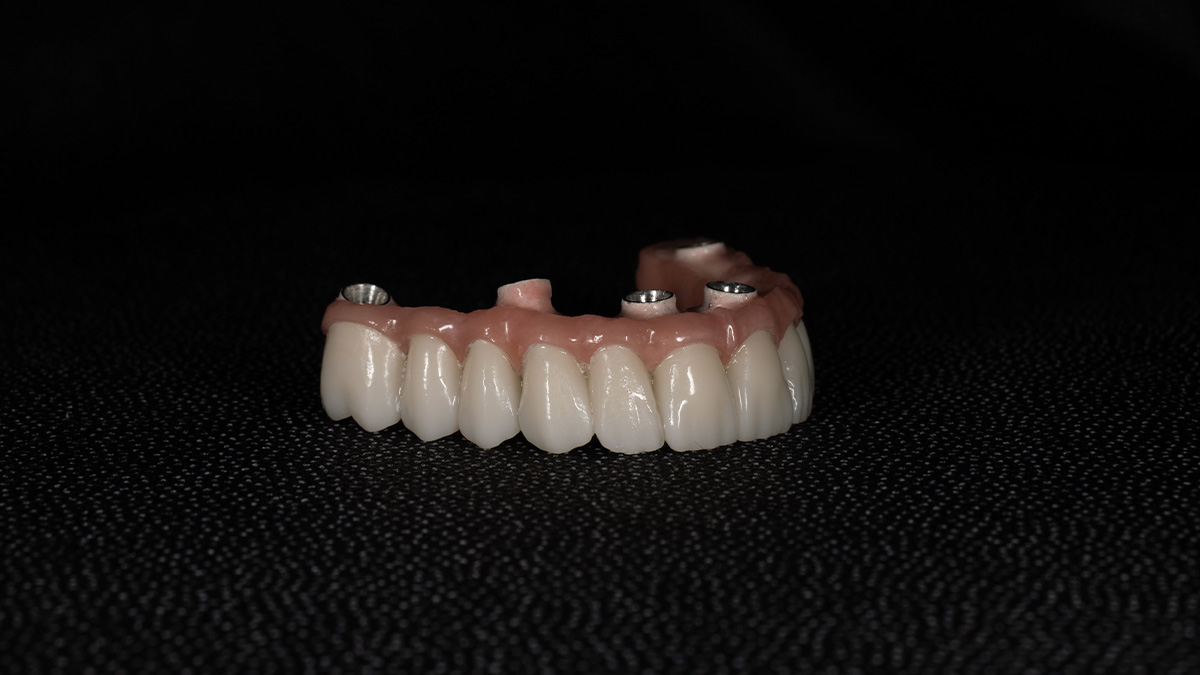All on 4 and All on 6 implants
The All-on-4 and All-on-6 methods represent revolutionary solutions in dental implantology, allowing for a complete smile restoration with a minimal number of implants. These techniques are specifically designed to quickly and effectively restore the functionality and aesthetics of the mouth for patients who have lost a significant number of teeth. In addition to providing excellent stability, these methods offer faster recovery and less invasive procedures compared to traditional implants.
What are All-on-4 Implants?
The All-on-4 technique uses four implants placed in the jaw to maximize the use of existing bone. The All-on-4 method allows patients to receive a fixed prosthetic restoration on the same day the implants are placed, leading to an immediate improvement in quality of life. All-on-4 is an ideal solution for those with limited bone volume who wish to avoid long and complicated bone augmentation procedures.
What are All-on-6 Implants?
The All-on-6 method involves placing six implants in the jaw, providing additional support and load distribution, which is ideal for patients with good bone quality. The All-on-6 method is suitable for those seeking even greater stability and security, and it is often recommended in cases of significant tooth loss. All-on-6 allows for the creation of more robust and durable prosthetic solutions.
Comparison of All-on-4 and All-on-6 Methods
Both the All-on-4 and All-on-6 methods offer numerous advantages, but they differ in certain aspects. All-on-4 is a faster and more economical solution, often without the need for additional procedures like bone augmentation, making it appealing to patients looking for less invasive options. On the other hand, All-on-6 provides greater stability and load distribution due to the additional implants, which can be important for patients with higher functional demands or more available bone.
Implantation Process for All-on-4 and All-on-6
The implantation process for All-on-4 and All-on-6 includes several stages. It begins with detailed planning using 3D diagnostics to ensure optimal implant placement. The surgical procedure is usually performed under local anesthesia, with implants placed in strategically chosen positions. After the implants are placed, a temporary or permanent prosthetic structure can be immediately attached, allowing patients to quickly return to normal activities.
Advantages of All-on-4 and All-on-6 Methods
The All-on-4 and All-on-6 methods offer a range of benefits that make them excellent choices for full jaw restoration. One key advantage is the rapid transformation of the smile, allowing patients to receive fixed teeth on the same day the implants are placed. Additionally, these methods require fewer surgical procedures and are less invasive compared to traditional implantation methods, leading to faster recovery and less postoperative discomfort. Due to the strategic placement of implants, it is often possible to avoid bone augmentation, reducing overall treatment time and costs. All-on-4 and All-on-6 also provide exceptional durability and stability, significantly improving chewing functionality and the patient’s quality of life.
Disadvantages of All-on-4 and All-on-6 Methods
While the All-on-4 and All-on-6 methods are highly effective and popular for jaw reconstruction, there are potential disadvantages to consider. One possible downside of the All-on-4 method is the higher load on the front implants, which may increase the risk of failure if the patient has high chewing demands or significant bone atrophy. On the other hand, All-on-6 requires more bone to place the additional implants, which can be limiting for patients with less healthy bone volume.
Recovery and Care Tips After All-on-4 or All-on-6 Implantation
Recovery after placing All-on-4 and All-on-6 implants varies from patient to patient but generally involves a period of several weeks to a few months. During the first few days post-surgery, it is recommended to avoid hard foods and reduce physical exertion. It is also important to maintain oral hygiene and regularly use prescribed antiseptic rinses to prevent infection.
Care tips after implantation include regular visits to the dentist for check-ups and cleaning of the implants and surrounding tissue. Good oral hygiene and avoiding habits like smoking are crucial for the long-term success of the implants. Patients should also be trained on how to properly clean the implants and use specialized cleaning tools to help maintain the health of the gums around the implants.
Who is the Ideal Candidate for All-on-4 and All-on-6 Implants?
Ideal candidates for All-on-4 and All-on-6 are individuals who have lost most or all of their teeth in one or both jaws and have sufficient bone quality to support the implants. It is also important that patients are in good general health and do not have medical conditions that could complicate the procedure or recovery. Patients who smoke or have uncontrolled chronic diseases must address these issues first.
Contact Us for More Information
Our team is ready to answer all your questions about All-on-4 and All-on-6 implants. Contact us for more detailed information or to schedule a consultation. Our mission is to provide you with a personalized solution that meets your needs and allows you to once again enjoy a healthy and functional smile.



